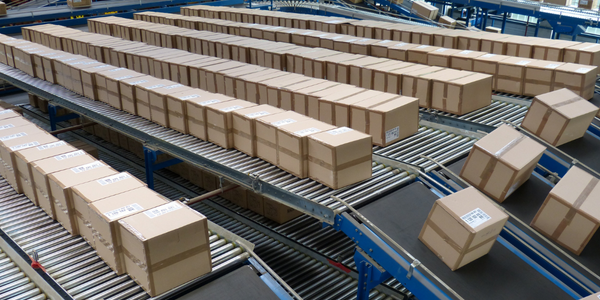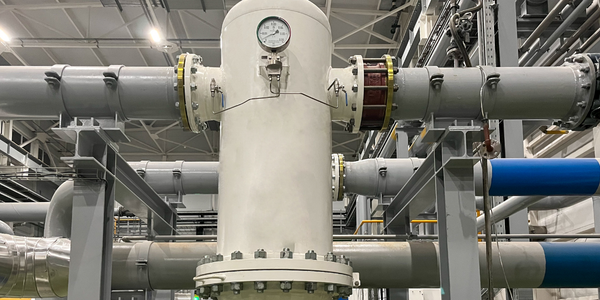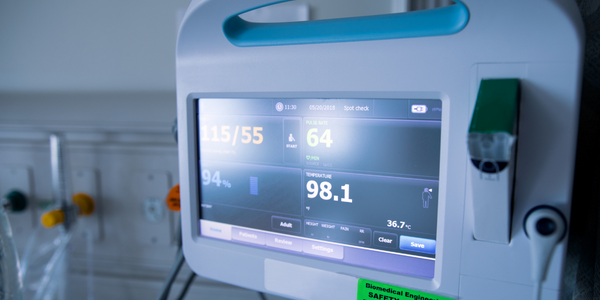下载PDF
Workflow Automation Enhances New Belgium Brewing Co.'s Beer Release Processes
技术
- 分析与建模 - 机器人过程自动化 (RPA)
- 网络与连接 - 5G
适用行业
- 包装
适用功能
- 采购
用例
- 租赁金融自动化
- 物料搬运自动化
挑战
新比利时啤酒公司是美国领先的精酿啤酒制造商,在从每年生产 5 种啤酒扩展到 30 多种啤酒时,面临着重大挑战。该公司现有的沟通和规划方法严重依赖电子邮件、会议和 SharePoint,事实证明,这些措施不足以满足业务规模的扩大。该啤酒厂担心潜在的沟通差距和遗漏的细节可能会阻碍其成功。推出一款新啤酒的过程涉及多个部门、数十名员工、多个流程,是一项复杂的任务。该公司依赖电子邮件通信和 SharePoint 来跟踪任务,这导致发布进度变慢,在每年都有新啤酒厂开业的竞争激烈的市场中,该公司无法承受这一风险。
关于客户
新比利时啤酒公司成立于 1991 年,现已发展成为美国第四大精酿啤酒制造商。该公司以 Ranger IPA 和 Fat Tire 琥珀啤酒等广受欢迎的啤酒而闻名,2013 年的收入为 1.9 亿美元。该公司是一家 100% 员工持股的 B 型企业,拥有 570 名员工。公司成立时,有德国啤酒和英国啤酒,但美国很少有专门生产比利时啤酒的啤酒厂。该公司从每年生产 5 种啤酒发展到每年生产 30 多种啤酒,这在新产品发布的沟通和规划方面带来了巨大的挑战。
解决方案
新比利时啤酒公司 (NewBelgium Brewing Co.) 确定工作流程自动化是应对其挑战的解决方案。在研究了各种选项后,该公司选择了 Nintex Workflow for SharePoint。该公司实施了 20 多个工作流程来协调和安排新啤酒的发布,确保不错过任何细节。这使得新比利时啤酒公司能够快速响应市场趋势。 Nintex Workflow 使新啤酒和新包装的流程自动化成为可能。使用 Nintex Workflow 可以轻松实现其他啤酒厂流程的自动化,使该公司能够在内部处理大部分流程,这提供了另一个显着优势。
运营影响
数量效益
相关案例.

Case Study
IoT Data Analytics Case Study - Packaging Films Manufacturer
The company manufactures packaging films on made to order or configure to order basis. Every order has a different set of requirements from the product characteristics perspective and hence requires machine’s settings to be adjusted accordingly. If the film quality does not meet the required standards, the degraded quality impacts customer delivery causes customer dissatisfaction and results in lower margins. The biggest challenge was to identify the real root cause and devise a remedy for that.

Case Study
Zenon the Ideal Basis for An Ergonomic HMI
KHS develops and produces machines and equipment for filling and packaging in the drinks industry. Because drinks manufacturing, filling and packaging consist of a number of highly complex processes, the user-friendly and intuitive operation of equipment is increasingly gaining in significance. In order to design these processes as simple as possible for the user, KHS decided to introduce a uniform, transparent and standardized solution to the company. The HMI interface should meet the requirement for people with different qualifications and enable them to work on a standard platform.

Case Study
Sparks Dynamics Assists Atlas Container Secure a $15,000 BGE Energy Rebate
The ReMASTER Compressed Air Monitoring system was installed in 2015. This system is capable of monitoring compressed air system parameters on a continuous basis and transferring that information to a cloud server which can be accessed by Atlas Container personnel, Industrial Diagnostics and Sparks Dynamics. This information was collected into a database which can be exported to an Excel spreadsheet or displayed graphically using Sparks Dynamics ViewMaster Software. The average annual compressed air electricity expense was estimated to be approximately $116,000. This is based on an incremental $/KWh electric rate of $.091 per KWh and an estimated compressed air energy consumption of 1,279,200 KWH. The implementation phase of Energy Conservation Measures (ECMs) for the Compressed Air System included: • Identification and repair of compressed air leaks • Understanding of compressed air usage per manufacturing machine and installation of shut off valves when the machines are no longer in production mode • Identification of misapplications of compressed air to include blow offs, venturis, and cooling scenarios • Understand system pressure requirements and potential installation of point of use pressure regulation.

Case Study
Automated Pallet Labeling Solution for SPR Packaging
SPR Packaging, an American supplier of packaging solutions, was in search of an automated pallet labeling solution that could meet their immediate and future needs. They aimed to equip their lines with automatic printer applicators, but also required a solution that could interface with their accounting software. The challenge was to find a system that could read a 2D code on pallets at the stretch wrapper, track the pallet, and flag any pallets with unread barcodes for inspection. The pallets could be single or double stacked, and the system needed to be able to differentiate between the two. SPR Packaging sought a system integrator with extensive experience in advanced printing and tracking solutions to provide a complete traceability system.

Case Study
Mondi Implements Statistics-Based Health Monitoring and Predictive Maintenance
The extrusion and other machines at Mondi’s plant are large and complex, measuring up to 50 meters long and 15 meters high. Each machine is controlled by up to five programmable logic controllers (PLCs), which log temperature, pressure, velocity, and other performance parameters from the machine’s sensors. Each machine records 300–400 parameter values every minute, generating 7 gigabytes of data daily.Mondi faced several challenges in using this data for predictive maintenance. First, the plant personnel had limited experience with statistical analysis and machine learning. They needed to evaluate a variety of machine learning approaches to identify which produced the most accurate results for their data. They also needed to develop an application that presented the results clearly and immediately to machine operators. Lastly, they needed to package this application for continuous use in a production environment.

Case Study
Industry 4.0 at ALPLA: Enhancing Factory Efficiency with IoT
ALPLA, a global leader in packaging solutions, faced several challenges as the complexity of their production machinery increased. The need for highly trained specialists in each factory led to higher personnel costs, difficulties in recruiting experienced talent at each location, and costly personnel turnover. Furthermore, less experienced operators running the machines sub-optimally impacted resource consumption and overall equipment effectiveness (OEE). ALPLA also faced the challenge of monitoring visual inspection systems in every line of their plants, which was almost impossible to do manually. In 2016, ALPLA decided to use data from the 900 different types of embedded sensors in each factory to address these issues. However, their initial choice of SQL Server as the data store for the sensor data proved inadequate, as it was unable to cope with their data requirements.





